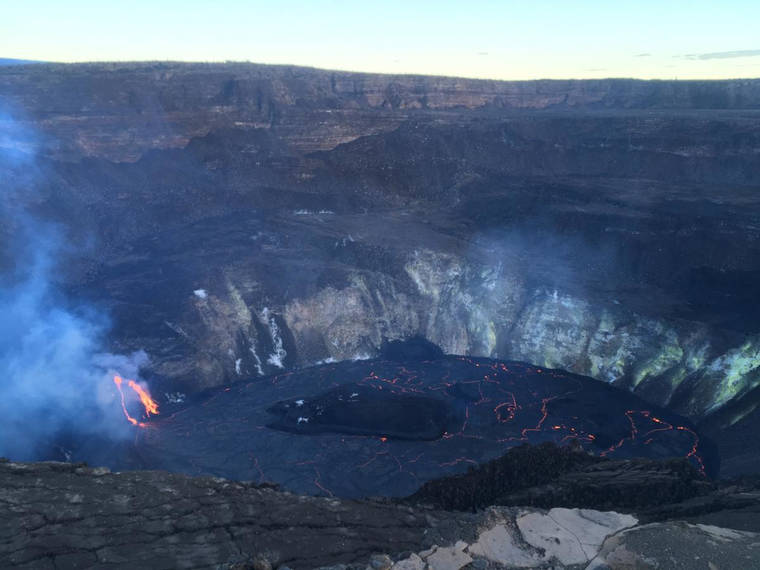Summit sulfur dioxide emission rates continued to drop over the weekend following the start of Kilauea Volcano’s summit eruption late Dec. 20.
The Hawaiian Volcano Observatory said Sunday morning the volcano was pumping out upward of 5,000 tons per day of sulfur dioxide (SO2) as of Saturday afternoon. That’s down substantially from the start of the eruption when 35,000 to 40,000 tons per day were being released. By Friday, that rate decreased to 16,000 to 20,000 tons per day.
Those emissions and other aerosols make up “vog,” or volcanic smog that’s typically across the Ka‘u District, hitting first areas like Pahala, Naalehu and Ocean View, before getting caught up in sea breezes that bring it toward West Hawaii and onshore in Kona.
According to the University of Hawaii at Manoa’s Vog Measurement and Prediction Project, southeasterly winds were increasing Sunday as forecast. The change from the typical northeasterly trades should provide some relief from the vog for the Kona area as the winds push the vog northward toward the rest of the state.
Meanwhile, the west vent feeding the lava lake inside Halema‘uma‘u crater continued erupting lava with two narrow channels visible Sunday morning, according to the observatory. The activity remains confined to Halema‘uma‘u.
The crater lake was about 581 feet deep with 2-yard narrow black ledge around it, suggesting the lava lake surface dropped over the past two days, scientists said. The lake was about 1,340 feet below the rim of Halema‘uma‘u.
The lava lake volume was estimated to be about 27 million cubic yards or 4.8 billion gallons. It covered nearly 72 acres.
An island of cooler, solidified lava within the lava lake continued to get smaller and was drifting slowly northeastward in the lake. It remained about 850 feet in length and 375 feet in width.
For more information on the ongoing eruption, visit https://www.usgs.gov/observatories/hawaiian-volcano-observatory. For more information on vog, including ways to monitor air quality, visit https://vog.ivhhn.org.



